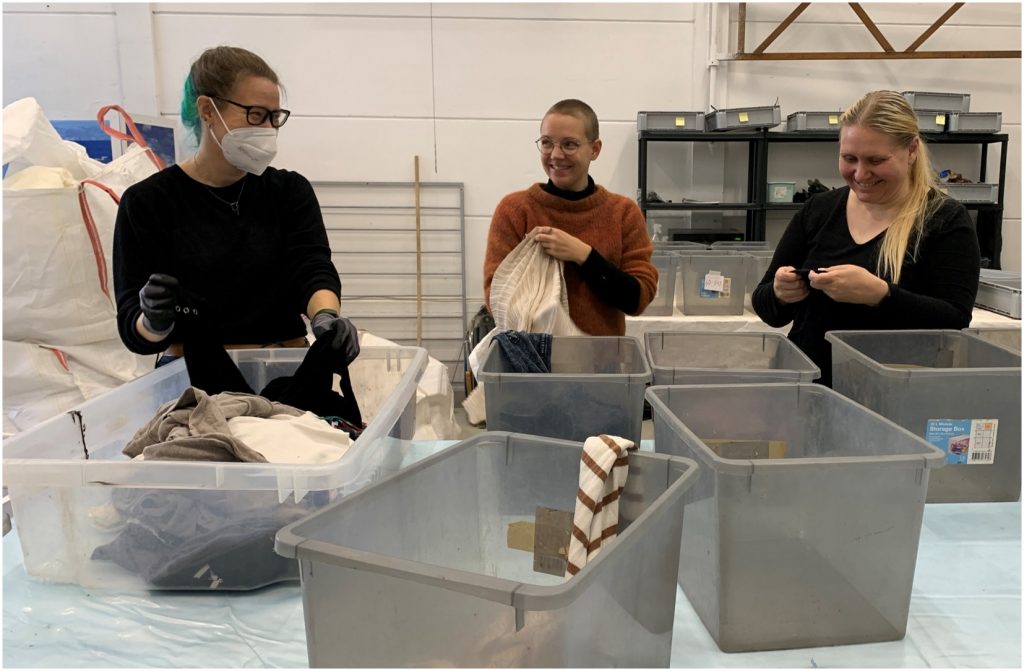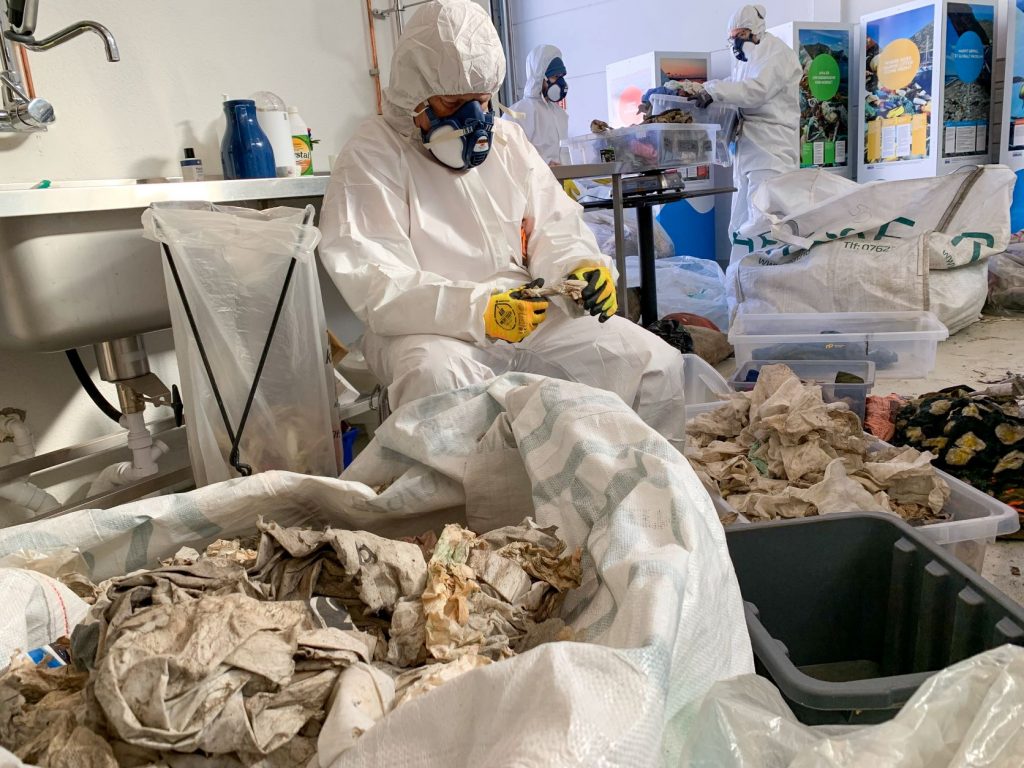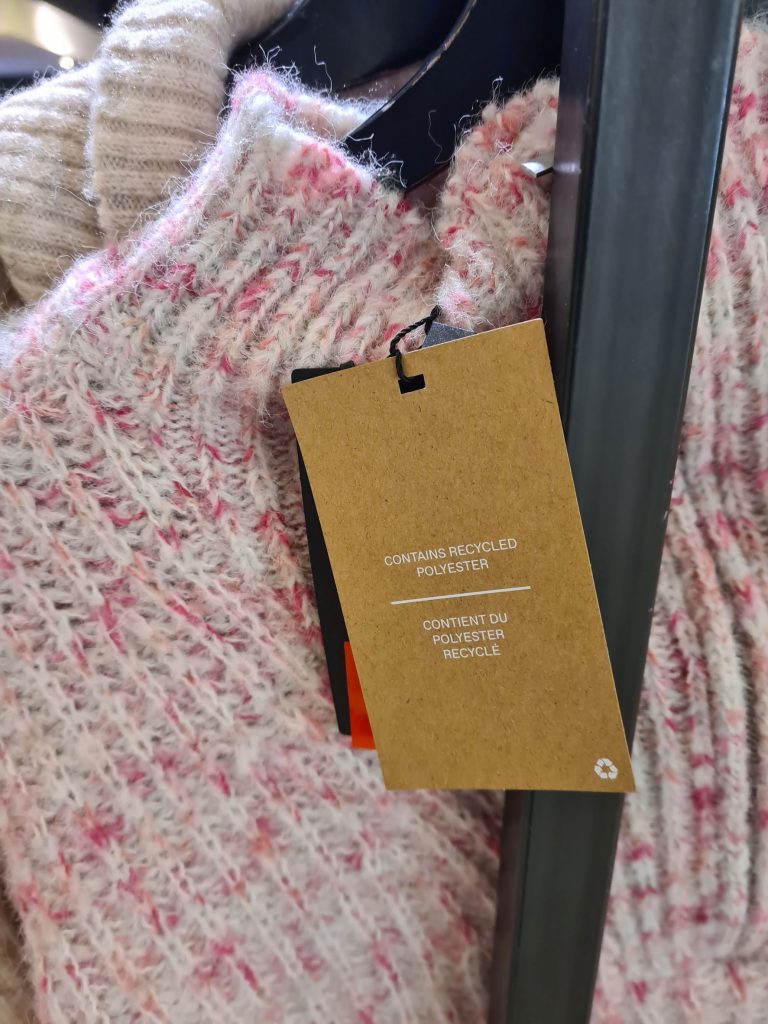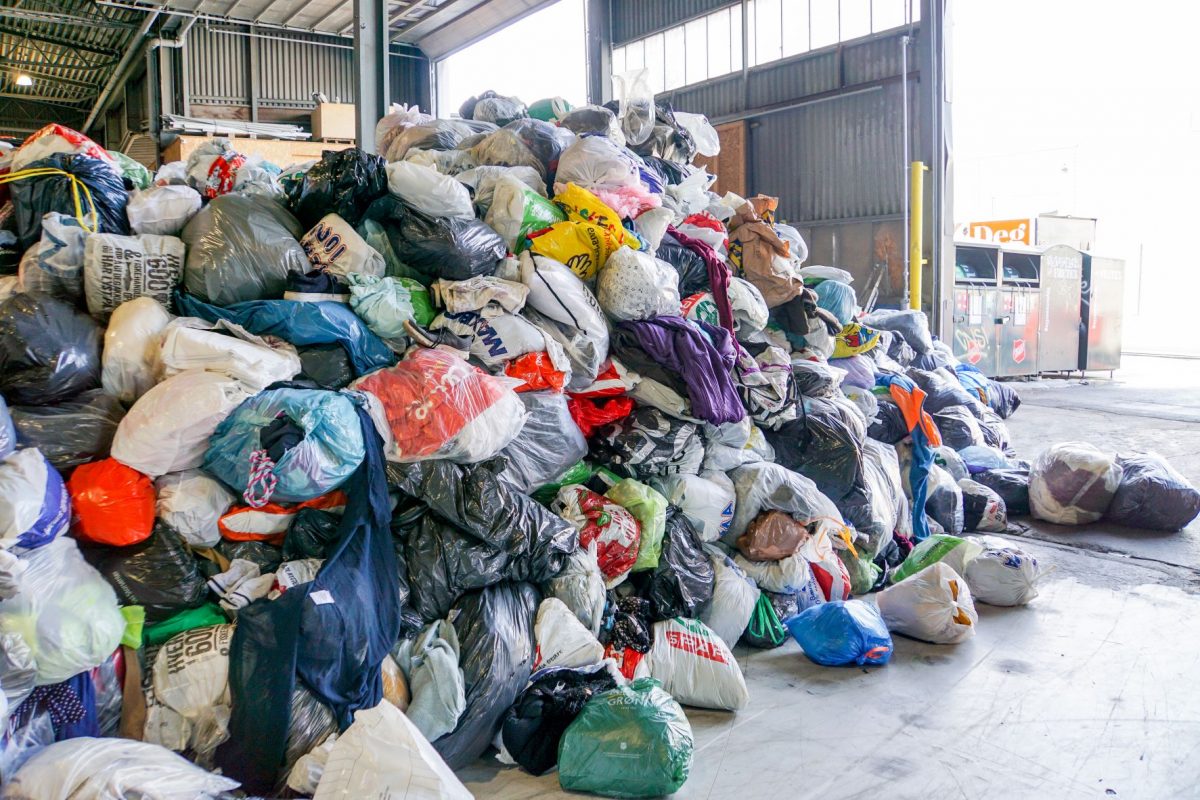We throw away clothes with the price tags on them
We throw away enormous amounts of clothing, and most of it contains polyester and other plastics. We need more knowledge to be able to meet the new EU requirement for separate textile collection by 2025, say researchers.
Text Kjersti Lassen/Consumption Research Norway (SIFO)
After cleaning out your wardrobe, you might be left with a pair of trousers with a huge hole in the knee, a sweater you stopped wearing a long time ago or a dress you never really ended up wearing. Where should you dispose of the clothes you want to get rid of?
In Norway you may put whole garments that are clean and functional for a new user in a container for clothing collection, but what about the damaged clothes?
– There are few other options than throwing them in the residual waste, says PhD candidate holder Anna Schytte Sigaard, part of Consumption Research Norway’s Clothing Research team.
Clothing disposal after 2025
But this will not be an option quite soon. Textiles are prioritized in the EU’s circular economy strategy, and by 2025, separate textile collection will be mandatory, also in Norway.
– In order to find out how this is to be organized, we need to know what types of textiles are actually thrown into the municipal waste or end up in other waste or collection streams, says Sigaard.
She is involved in the research project Wasted Textiles, which studies the fate of all the textiles that go out of use. Why do we throw away clothes, what do we throw away, and what do we choose to keep? What is the condition of the clothing that is thrown away, and how much is made of synthetic materials, i.e. plastic?
Because what will happen to the textiles that are collected? Can they be recycled in some way, so that the materials can be used further?
– Then we first have to find out what the clothes are made of. Material recycling is difficult, and with mixed materials it is almost impossible. The next product is almost always of poorer quality, she says.
Method: Deep dive into our waste
To find answers, the researchers have gone through our textile waste: from municipal waste, from recycling facilities where people themselves deliver clothes as waste and from apparel and textile receiving bins where interior textiles, clothes and shoes are delivered to UFF (Humana People to People) or Fretex (Salvation Army).

– We had to start by developing the picking analysis method, says Sigaard, which they did together with Mepex, a consulting company for waste and recycling. Dressed in protective suits and masks, they went through a total of 3,500 kilos of waste, some of it soiled, smelly and ruined, while other things were as good as new. They have looked at different types of textiles, fiber content and the condition of the garments.
– We found a surprising number of garments with the price label still on them, also at the waste recovery stations. People have thrown away completely new garments.
– Everything from the municipal waste, however, was ruined, as the textiles were mixed with food waste and everything else, and impossible to assess. Clothes in the municipal waste have no use value, she says.

Surprised by the amount of plastics
Two-thirds of the textiles examined contained some or mainly synthetic fibers, i.e. non-renewable materials or plastics, depending on how one likes to categorize synthetics. Polyester is the largest category, but acrylic, elastane and nylon were also prevalent.
The rest, a third of the textiles, were natural materials or what we call renewable materials, such as cotton, wool and silk. Or viscose, which is also plant-based and degradable, but has undergone intensive chemical processing.
– We were surprised by the large proportion of plastic, as we included all textiles, and found a lot of bed linen and towels, which are most often made of cotton. Still, there is an inordinate amount synthetic altogether, says Sigaard.
If we had only included clothing, there would have been an even greater proportion of plastic. Over two-thirds of all materials in textiles produced today are synthetic.
There is also reason to believe that the proportion of plastic clothing binned will increase in a few years. There is a constant growth in the production of synthetic textiles, and the clothing bought today will be thrown away in a few years. The clothes we find in the trash today have of course been bought back in time.
Analyzing over 3000 discarded clothing-items
All clothing has a label showing the fiber content. This is required by law. But how precise is this label? Investigations in other countries show that many clothes are mis-labelled and contain a greater proportion of synthetic materials than what is stated on the labels. Does this also apply in Norway?
To test this, the Wasted Textile researchers have borrowed a FabriTell fiber scanner – a small, hand-held machine that uses near-infrared analysis technology to identify the fiber composition in textiles. The researchers scanned a selection of the textiles that had been collected from the 28 households. They chose everything that was labelled as mixed fibers or not marked at all.

– We found a lot that was mislabeled. For example, t-shirts or hoodies may be labeled as 100 percent cotton, while the scanner shows that the ribbed edges are mixed with synthetic materials. This is within the law, but gives incorrect information, says Sigaard.
We need to reduce production
All knowledge that emerges in Wasted Textiles can be used in the work to fulfill both policy issues and other incumbent requirements the new textile strategy for circular economy in the EU will spearhead. Denmark will start a separate textile collection system as early as June 2023, and hopefully Norway will follow suit in 2025.
Overproduction of clothing is made possible due to the large amount of polyester and other cheap plastic materials used by the apparel industry. This creates enormous amounts of textile waste that leach microplastics and chemicals. The waste often ends up as waste mountains in the Global South, as we have seen in the media from Chile and Ghana.
– The most important thing is to reduce the amount of waste. For this to happen, all actors in the value-chain must agree, or be forced to do so. As of now, the industry is only concerned with recycling opportunity, not reducing production, says Sigaard. In other words: Business as usual.

